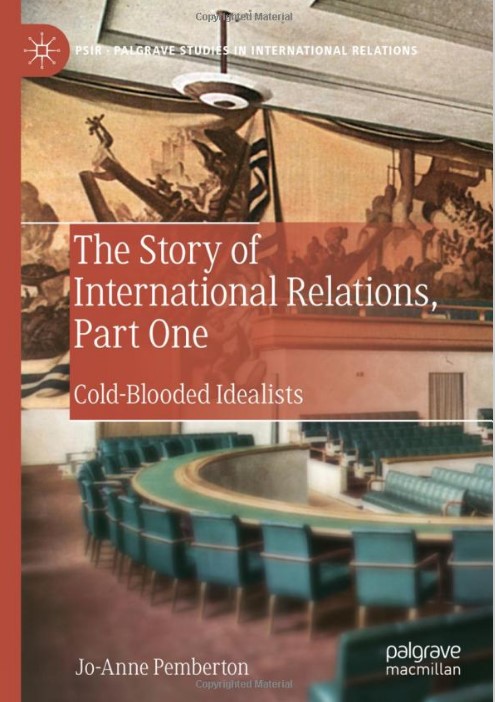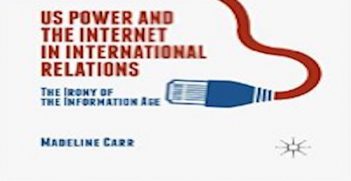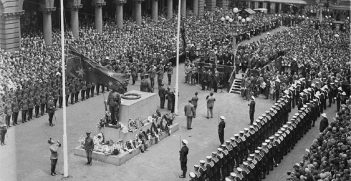Book Review: The Story of International Relations, Part One: Cold-Blooded Idealists by Jo-Anne Pemberton

Pemberton’s collection of books offers many competent perspectives on the state of international relations in the post-WWI epoch, with certain and typographical errors undermining its cohesiveness.
There are several books within the covers of The Story of International Relations, Part One. The first and by far the most interesting is a 180-page original monograph essentially on the history of the International Institute of Intellectual Cooperation, based largely upon the archives of UNESCO, nesting this story within the broader question of the notion of international intellectual cooperation which was conceived as one of the building blocks of international society in the post-Great War epoch. Among the topics given careful attention are the organisation of the British Coordinating Committee for International Studies and the formation of the International Studies Conference with much of its agenda focusing upon the notion of peaceful change.
The second is a competent account of the evolution of the Institute of Pacific Relations (IPR), the example of which the author successfully demonstrates was undoubtedly important in the development of the movement towards international intellectual cooperation and exchange in the interwar period. However, the achievement of this book falls short of the first as it makes no use of the copious archives of the IPR (in Columbia, Hawaii, and British Columbia universities) and therefore does not extend the stories already told adequately elsewhere, notably in the books of Paul Hooper and Tomoko Akami (which indeed are extensively cited).
There is a third book, which accounts for almost half of the 580 pages under review, which is devoted to a very detailed discussion of certain episodes in the diplomatic history of the post-Great War period. These include the negotiations in Paris on Japan’s attempt to write a racial equality clause into the Covenant of the League of Nations and the dispute over Japan’s acquisition of Germany’s colonial possession in Shandong, China, the subsequent Washington naval arms limitation conference, and the 1931-32 Manchuria crisis. However, the question of why these and not other episodes have been selected is not addressed – there is no chapter on Locarno, for example – and the connection between this material and the evolution of the international relations discipline is not explicitly discussed. To be sure, there is a good deal of reference to contemporary analysis of these developments, but even in this respect, the choice of authors is sometimes puzzling. For example, a good deal of attention is paid to Felix Morley’s, The Society of Nations (1932) which considers the evolution of the League of Nations up to and including the Manchuria crisis. But why Morley is singled out for such treatment, and the various works of Noel-Baker, Wilson Harris, Howard Ellis (his 1928 book judged by Quincy Wright, a scholar often cited in this volume, as “the standard work in English on the League”) or even Fred Alexander are neglected, is a question left unconsidered.
This observation leads to wider questions regarding selection. There are accounts of the emergence of the international relations discipline in which Norman Angell (who popularised the vital and influential concept of “interdependence”), Leonard Woolf, Paul Reinsch and Lowes Dickinson are considered major pioneers; this trajectory is then maintained by Delisle Burns, Charles Webster, Pitman Potter, and Parker T Moon (the latter’s 1925 Syllabus on International Relations is a major source for understanding the meaning of “international relations” in that era). Although some of these people are briefly mentioned (Reinsch by virtue of his role as a diplomat, but not as a scholar), there is little discussion of their ideas. To be sure, Léon Bourgeois, Alfred Zimmern, Arnold Toynbee and J B Condliffe are all considered in some detail, and Raymond Buell is rightly recognised as a pioneer, but why the former group are excluded is not given any justification. Moreover, when these and other contributors to the story receive attention, it is as much for their organisational role as for their ideas. Clearly there is room for a measure of disagreement on which works to include in any narrative on the appearance of what was then taken to be a new discipline, but given the now extensive literature on this topic the absence of a discussion of the work’s principles of selection is unfortunate. Generally the recognition of more recent scholarship is sound, though there are some surprising omissions, including Hathaway and Shapiro (2017) on the Kellogg-Briand Pact and Naoko Shimazu (1998) on Japan and the racial equality clause in Paris. There are also a number of typographical errors, one of which (on p 158) unfortunately reverses the central argument that the author seeks to sustain in the chapter in question.
For a work written by an Australian scholar there is very little reference even to those episodes in which Australia played a modest role. For example, the informal committee to establish an institute of international relations chaired by Curtis in Paris is described as being composed of “three Americans and three Britons” (p 78). But it is not noted that one of the latter – J G Latham – was an Australian, later to preside over the League of Nations Union in Victoria and subsequently to serve as Australia’s first minister in Tokyo.
There are apparently to be two further volumes in this work which will take the story beyond 1932, contemplation of which may facilitate a wider view of this project. But as it currently stands, the high standard of its scholarship is to a regrettable extent undermined by its lack of signposts.
James Cotton (PhD, London School of Economics) is Emeritus Professor, University of NSW, Australian Defence Force Academy.
This is a review of Jo-Anne Pemberton’s The Story of International Relations, Part One. Cold-Blooded Idealists (Palgrave Macmillan, 2020), ISBN 978-3-030-14330-5.
This article is published under a Creative Commons Licence and may be republished with attribution.





